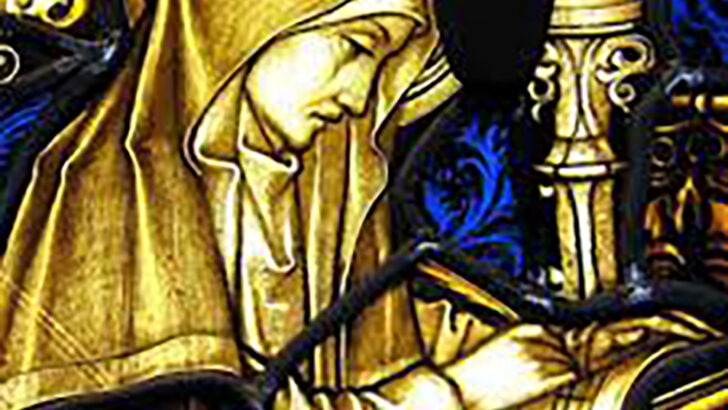“With Angels and Archangels”: Sharing the Worship of Heaven. Bible, Poetry Liturgy and Devotion in the Middle Ages,
by John Blakesley
(Gracewing, £15.99 / €19.25)
For mainstream theologians this sort of liturgical poetry is a rather narrow interest. It addresses not central issues in relation to the understanding and presentation of the Eucharist, but simply deals with matters of changing presentational style. It often arises too from a confusion of aesthetic feelings with a mystical experience, some think.
Nevertheless the use of hymns and other musical forms is now for many an essential even integral feature of Christian worship. This, the author, admits is often taken for granted.
Hymns
The use of hymns is a development usually credited to St Ambrose of Milan (c. 339- 397), to whom tradition credits the composition of the Te Deum. For half a millennium hymns in the style of St Ambrose were (the author remarks) “the only legitimate form of liturgical poetry. These non-scriptural developments were seen by many as a way of reinforcing the truths of the Gospel especially in a society which was still largely illiterate.
It these developments that are discussed in the ten compact chapters of this book. He isolated a set of significant figures Notker, the so-called “Stammer of St Gall”, the styles of Paris and Winchester, and the contribution of Hildegard of Binge and Elizabeth of Schönau.
In his final chapters he draws together the themes of the disparate approaches into an essay on sharing in the worship of heaven, with the Angels and Archangels”. The highly literate person involved in contrast with the mass of the Christian population. One might almost see a relationship with the facades of the Gothic cathedrals of Europe on which are carved in stone the various ranks and orders of the Chrstians universe, rising from the humble folk to the Almighty Creator enthroned in power like an emperor of creations.
The author emphasises the sense of communion which the middle ages created, and which by implication many think of as lost in the Church today. But for many this musical tradition epitomises what the Church really is, as least for them, whatever theologians more closely based on the actual terms of the gospels might wish to bring to people’s minds and hearts today.
Yet this would be, as theologians suggest, to refocus the centre away from the Eucharist, where it might more properly be placed, where in the view of most Christian’s communion essentially takes place.


 Peter Costello
Peter Costello Hildegarde of Bingen composing music.
Hildegarde of Bingen composing music. 